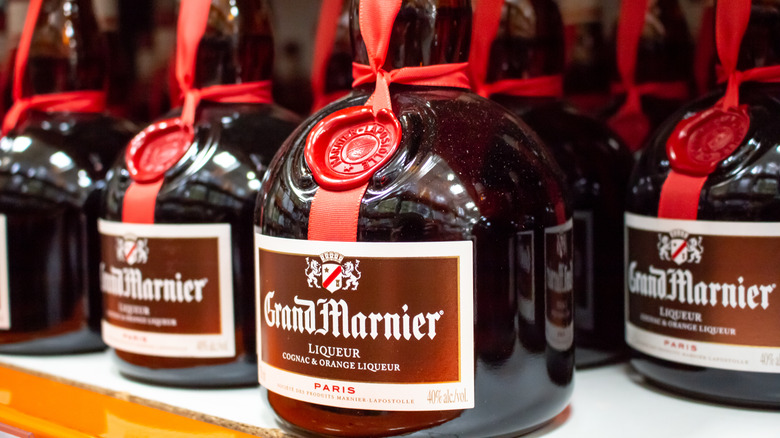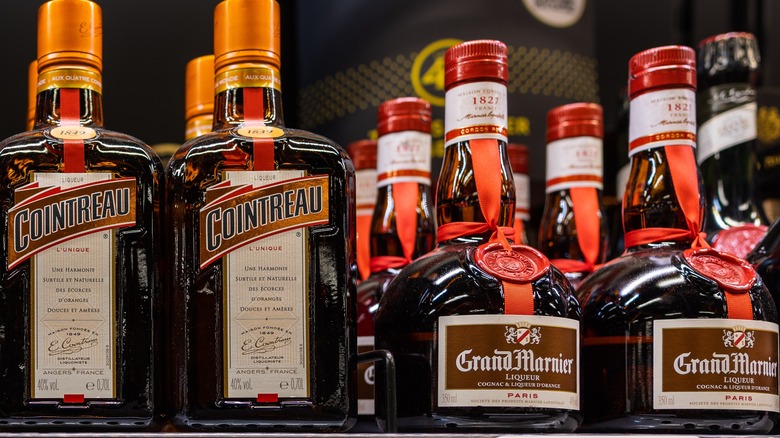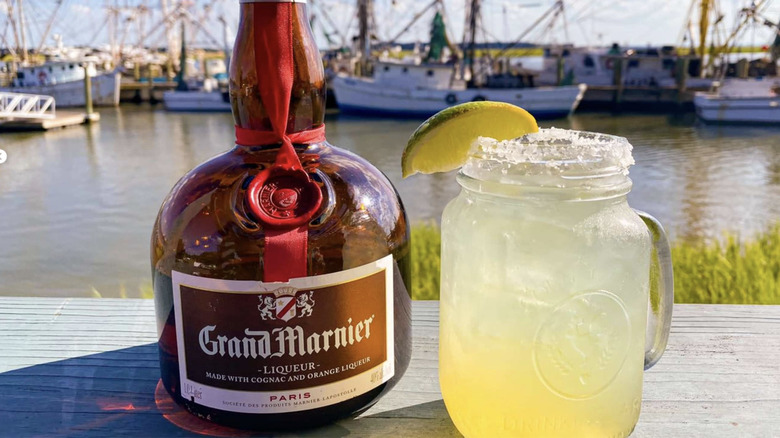What Makes Grand Marnier Different From Triple Sec?
There are enough orange liqueurs on the market today that it can be hard to tell them apart, yet few are as prestigious as Grand Marnier. Although it's an orange-inflected liqueur at heart, this famed product carries some significant distinctions from similar spirits, such as triple sec.
Contrary to what some may believe, triple sec is actually a generic French liqueur made by many brands. To make it, the process starts by drawing out the aromatic oils of orange peels and combining them with a neutral spirit, as well as sugar. The result is a sweet, clear liqueur with a strong orange flavor. Triple sec is commonly found in cocktails like a margarita, sidecar, or a Between the Sheets. Cointreau is widely considered the best and most popular brand, and is prized for its dry, balanced sweetness.
Grand Marnier, on the other hand, starts with a base of orange liqueur that is then blended with cognac. The exact ratio is 51% cognac to 49% liqueur. This gives the spirit a richer depth of flavor, as well as warmer notes from the brown liquor. Compared to Cointreau, Grand Marnier has an even more complex taste. Most bartenders likely wouldn't recommend you drink triple sec neat, as it's meant to be a mixer. Meanwhile, Grand Marnier can either be mixed into drinks or savored on its own.
The origins of Grand Marnier and triple sec
Triple sec grew out of an older style of orange liqueur called Curaçao, which was first manufactured by Dutch colonists in the Caribbean. In 1834, Distillerie Combier adapted this spirit and replaced Caribbean oranges with Haitian ones, producing the first triple sec. The Cointreau company was founded in 1849, though it didn't settle on the final recipe for its namesake liqueur until 1875. In 1893, Cointreau was served at the World's Fair in Chicago, and by the 1920s, it had become a staple thanks to classic cocktails like the sidecar.
The origins of Grand Marnier date back to the same time period. In 1827, a French spirit maker named Jean-Baptiste Lapostolle founded the company that makes Grand Marnier to this day: Marnier-Lapostolle. The distiller traveled to the town of Cognac and learned the art of making its eponymous spirit. As with drinks like Champagne or bourbon, cognac carries a geographic distinction and must be made in specific areas near Cognac.
Flash forward to 1880, and Louis-Alexandre Marnier-Lapostolle (the grand-nephew of Jean-Baptiste) had created his own mix of cognac and a proprietary orange liqueur. The drink was initially called Curaçao Marnier, but the famous hotelier César Ritz recommended Louis-Alexandre change the name to Grand Marnier to emphasize its grand nature. Ritz's business partner, highly influential chef Auguste Escoffier, used Grand Marnier in many recipes like Crêpes Suzette, which bolstered the drink's popularity.
Can you swap triple sec for Grand Marnier?
Although Grand Marnier and triple sec share some common characteristics, they are distinct liqueurs and should be treated as such. That said, you can experiment with using Grand Marnier instead of triple sec, but understand that you'll be changing the nature of the drink. There's even a name for this; when you swap in Grand Marnier, you make a "grand" version of the cocktail. For example, a sidecar made with the swap becomes a "grand sidecar."
Making this substitution can give your drink more depth of flavor and introduce new tasting notes. A grand margarita, for example, will taste less sweet and more warm than a traditional margarita made with Cointreau. This is one of the fastest ways to make a homemade margarita taste more expensive, but not everyone will be a fan. Also, keep in mind that Grand Marnier has an ABV of 40%. Cointreau shares the same alcohol content, but other triple secs can range as low as 15%. This means substituting Grand Marnier may result in a boozier cocktail.
Replacing Grand Marnier with triple sec is more challenging. Cointreau's balanced flavor will work better in a pinch than other kinds of triple sec, though it will make your drink lighter and sweeter. If you happen to have cognac and triple sec on hand, you can try combining these to create your own DIY Grand Marnier.



